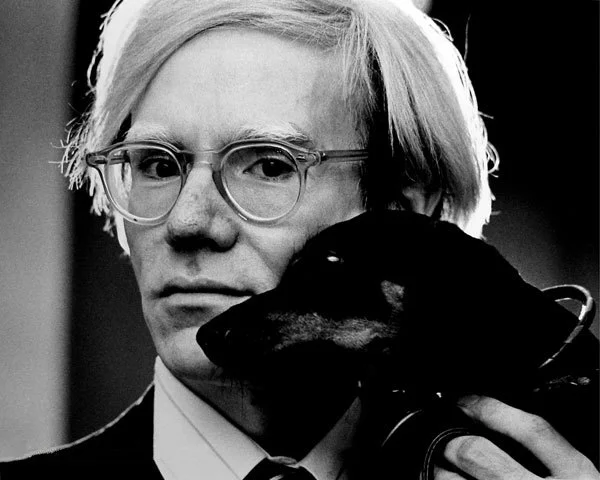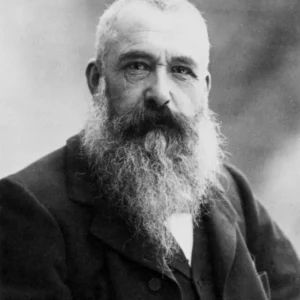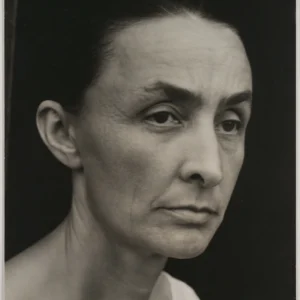Andy Warhol is a name that needs no introduction. As one of the most influential artists of the 20th century, Warhol redefined what art could be, blurring the lines between high culture and everyday life. From his iconic Campbell’s Soup Cans to his mesmerizing portraits of Marilyn Monroe, Warhol’s work captured the essence of consumerism, celebrity, and mass production. But who was Andy Warhol, and how did he become the face of Pop Art? Let’s dive into the life, work, and enduring legacy of this cultural icon.
Early Life: A Sickly Boy in Pittsburgh
Andy Warhol was born Andrew Warhola on August 6, 1928, in Pittsburgh, Pennsylvania, to Slovak immigrant parents. Growing up in a working-class family, Warhol faced numerous challenges, including a rare neurological disorder that left him bedridden for much of his childhood. During this time, he developed a love for drawing, movies, and pop culture, which would later become central themes in his art.
Warhol’s mother, Julia, recognized his talent and encouraged his creativity, often buying him comic books and art supplies. This early support laid the foundation for his future career as an artist.
Education: From Carnegie Tech to New York City
Studying Commercial Art
Warhol attended Carnegie Institute of Technology (now Carnegie Mellon University), where he studied commercial art. His time at Carnegie Tech exposed him to a wide range of artistic styles and techniques, from traditional painting to graphic design.
Moving to New York
After graduating in 1949, Warhol moved to New York City to pursue a career in illustration. He quickly found work in the advertising industry, creating whimsical drawings for magazines like Glamour and Vogue. His unique style, characterized by playful lines and bold colors, set him apart from other illustrators of the time.
The Rise of a Commercial Artist: Success in Advertising
The Blotted-Line Technique
Warhol developed a signature technique called the blotted-line method, which involved tracing images onto paper and then blotting the ink to create a soft, uneven line. This technique allowed him to produce multiple versions of the same image, foreshadowing his later use of repetition in his art.
Commercial Success
By the 1950s, Warhol had become one of the most sought-after commercial artists in New York. His work for clients like Tiffany & Co. and I. Miller Shoes earned him a reputation for creativity and innovation. However, Warhol longed to be recognized as a fine artist, not just a commercial illustrator.
The Birth of Pop Art: Challenging the Art World
The Shift from Abstract Expressionism
In the early 1960s, the art world was dominated by Abstract Expressionism, a movement characterized by emotional, gestural paintings. Warhol, along with other artists like Roy Lichtenstein and James Rosenquist, sought to challenge this trend by focusing on popular culture and everyday objects.
Warhol’s First Pop Art Exhibitions
Warhol’s first Pop Art exhibitions in 1962 marked a turning point in his career. His work, which featured images of consumer products like Campbell’s Soup Cans and Coca-Cola bottles, was both celebrated and criticized for its bold departure from traditional art.
Campbell’s Soup Cans: A Cultural Icon
The 1962 Series
Warhol’s Campbell’s Soup Cans series, consisting of 32 canvases, each depicting a different flavor of soup, became an instant sensation. The work challenged the notion of what art could be, elevating a mundane, mass-produced object to the status of high art.
The Inspiration Behind the Work
Warhol’s choice of Campbell’s Soup was deeply personal. He had grown up eating the soup and saw it as a symbol of American consumer culture. By reproducing the cans in his art, Warhol forced viewers to reconsider the role of everyday objects in their lives.
Marilyn Monroe: Celebrity as Art
The Marilyn Diptych
Following Marilyn Monroe’s death in 1962, Warhol created the iconic Marilyn Diptych, a series of 50 silkscreened images of the actress. The work explored themes of fame, mortality, and the commodification of celebrity.
The Role of Repetition
Warhol’s use of repetition in the Marilyn Diptych highlighted the mass production of images in popular culture. By repeating Monroe’s image, Warhol emphasized both her ubiquity and her vulnerability.
The Factory: A Hub of Creativity and Chaos
Establishing The Factory
In 1962, Warhol established The Factory, a studio and social space in New York City. The Factory became a hub for artists, musicians, and celebrities, including Lou Reed, Edie Sedgwick, and Nico.
The Eclectic Mix of Visitors
The Factory was known for its creative energy and chaotic atmosphere. Warhol used the space not only to create art but also to produce films, host parties, and collaborate with other artists.
Warhol’s Artistic Techniques: Silk Screening and Repetition
The Silk Screening Process
Warhol’s use of silk screening allowed him to mass-produce images, blurring the line between art and commerce. The technique involved transferring an image onto a mesh screen and then applying ink to create multiple prints.
The Role of Repetition
Repetition was a central theme in Warhol’s work. By repeating images, he commented on the mass production and consumption of goods and media in modern society.
The Death and Disaster Series: A Darker Side of Pop Art
Exploring Dark Themes
In the 1960s, Warhol created a series of works that explored themes of death and violence, including “Car Crash” and “Electric Chair.” These pieces contrasted sharply with his more commercial work, revealing a darker side of Pop Art.
The Impact of the Series
The Death and Disaster series challenged viewers to confront uncomfortable truths about mortality and the human condition. It also demonstrated Warhol’s ability to tackle serious subjects within the framework of Pop Art.
Exploding Plastic Inevitable: Art Meets Performance
Multimedia Events
In the mid-1960s, Warhol collaborated with the band The Velvet Underground to create Exploding Plastic Inevitable, a series of multimedia events that combined music, film, and visual art.
The Fusion of Art Forms
These events were groundbreaking in their fusion of different art forms, paving the way for future multimedia performances.
Warhol’s Films: Pushing Boundaries in Cinema
Experimental Films
Warhol produced over 60 experimental films, including “Sleep” (1963), which showed a man sleeping for six hours, and “Empire” (1964), an eight-hour shot of the Empire State Building.
Challenging Traditional Storytelling
Warhol’s films challenged traditional notions of storytelling and filmmaking, emphasizing the mundane and the everyday.
The Attempted Assassination: A Turning Point
The 1968 Shooting
In 1968, Warhol was shot by Valerie Solanas, a radical feminist and writer. The attack left him severely injured and had a profound impact on his life and work.
A Shift in Focus
After the shooting, Warhol became more reclusive and focused on commissioned portraits and commercial projects.
Interview Magazine: Warhol’s Foray into Publishing
Founding Interview
In 1969, Warhol founded Interview Magazine, a publication that focused on celebrity culture and fashion. The magazine became a platform for Warhol to explore his fascination with fame and media.
Influence on Media
Interview played a significant role in shaping the way celebrities and culture were portrayed in the media.
Warhol’s Portraits: Capturing the Famous and the Forgotten
Celebrity Portraits
Warhol created portraits of numerous celebrities, including Mick Jagger, Debbie Harry, and Muhammad Ali. These works explored the intersection of art and celebrity.
Everyday People
Warhol also painted portraits of everyday people, challenging the notion that only the famous deserved to be immortalized in art.
The Business of Art: Warhol as a Brand
Embracing Commercialism
Warhol embraced commercialism, turning himself into a brand and blurring the lines between art and business.
Self-Promotion
His ability to self-promote and market his work played a key role in his success.
Collaborations: Warhol’s Work with Other Artists
Partnerships with Basquiat and Haring
In the 1980s, Warhol collaborated with artists like Jean-Michel Basquiat and Keith Haring, creating works that combined their unique styles.
The Impact of Collaboration
These collaborations pushed Warhol to explore new artistic directions and cemented his influence on younger generations of artists.
Warhol’s Legacy: The Andy Warhol Museum
The Museum in Pittsburgh
The Andy Warhol Museum, established in 1994 in Pittsburgh, preserves and promotes Warhol’s work, ensuring his legacy endures.
Exhibitions Worldwide
Warhol’s work continues to be exhibited globally, inspiring new audiences.
Warhol’s Influence on Contemporary Art and Culture
Inspiring Future Artists
Warhol’s work paved the way for artists like Jeff Koons and Damien Hirst, who continue to explore themes of consumerism and celebrity.
Impact on Media and Fashion
His ideas about art, fame, and consumerism continue to shape modern media and fashion.
Visiting Warhol’s World: A Traveler’s Guide
Must-See Sites
From The Andy Warhol Museum to exhibitions worldwide, there are many ways to experience Warhol’s art and legacy.
Tips for Travelers
Plan visits during off-peak hours to fully appreciate the art.
Conclusion: Why Warhol’s Vision Endures
Andy Warhol’s influence on art and culture remains as vibrant and relevant today as it was during his lifetime. His work, though often debated and sometimes misunderstood, continues to challenge our preconceptions about art, celebrity, and consumerism. Warhol’s exploration of mass media, popular culture, and the blurring lines between high and low art anticipated many of the trends that define our contemporary world. He not only reflected the culture of his time but also actively shaped it, influencing generations of artists, designers, and filmmakers. His fascination with fame and the cult of personality seems even more prescient in our hyper-connected, social-media-driven society. Ultimately, Warhol’s legacy is a testament to the enduring power of creativity and innovation, reminding us that art can be both a mirror reflecting our world and a catalyst for change. His work continues to provoke, inspire, and force us to reconsider our relationship with art and the world around us.
FAQs:
- What is Pop Art, and why is Andy Warhol associated with it?
Pop Art is an art movement that emerged in the 1950s and 1960s, focusing on popular culture and everyday objects. Andy Warhol is one of its most famous figures, known for works like Campbell’s Soup Cans and Marilyn Diptych, which blurred the lines between art and commerce. - What is the significance of Campbell’s Soup Cans?
Campbell’s Soup Cans (1962) is one of Warhol’s most iconic works, featuring 32 canvases of soup cans. It challenged traditional notions of art by elevating a mundane, mass-produced object to the status of high art, reflecting the influence of consumer culture. - What was The Factory, and why was it important?
The Factory was Warhol’s studio and social space in New York City, known for its creative energy and eclectic mix of visitors. It became a hub for artists, musicians, and celebrities, playing a key role in the development of Pop Art and 1960s counterculture. - How did Warhol’s work influence contemporary art?
Warhol’s embrace of commercialism, celebrity culture, and mass production paved the way for contemporary artists like Jeff Koons and Damien Hirst. His ideas about art, fame, and consumerism continue to shape modern art and culture.



